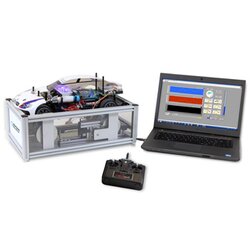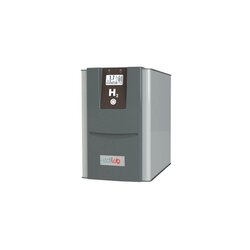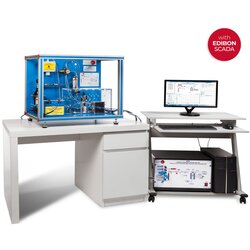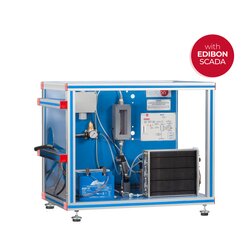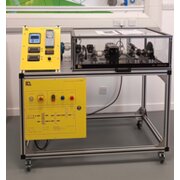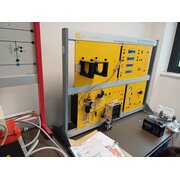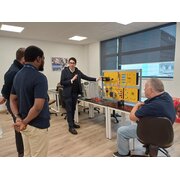Fuel Cell Training Systems & Lab Equipment
Sort by
Learn more about Fuel Cell Training Systems
In the below section we will cover a few important topics surrounding fuel cell training systems, specifically fuel cell training equipment used as instructional technology.
If you want to learn about Hydrogen, different industry applications, expected job creation in the hydrogen industry and existing training programs, then our in-depth blog post about general fuel cell education and training is for you.
What is a Fuel Cell Training System?
A fuel cell training system can be referred to as “instructional technology” or “didactic equipment” or “educational tool”, which is specifically designed to teach hydrogen and fuel cell technology.
A fuel cell training system normally consists of hardware, software and educational content (delivered either in printed or digital form).
Components of a Fuel Cell Training System
Most fuel cell training systems will have components and didactic content with student exercises covering the following sections:
- Renewable energy in our society (global warming)
- Problems with renewable energy (intermittence)
- Renewable energy production (solar photovoltaic or wind)
- Hydrogen production (electrolysis of water powered by renewable energy)
- Hydrogen storage (low pressure metal hydride storage)
- Creating electricity with a fuel cell (from low pressure storage)
- Powering an output by fuel cell (electric motor, lights or similar)
There are normally exercises, facts, activities, trouble shooting, calculations, experiments and similar for each step or component of a fuel cell training system.
Why use Fuel Cell Training Systems?
Hydrogen is an energy carrier (best compared to a fuel) which is turned into electricity when it is fed through a fuel cell. Since hydrogen is becoming an integral part of our society and has an increasing number of industry applications it is something which our existing and future engineers and technicians will need to know how to handle.
There are various benefits of using hands-on fuel cell training systems:
Content retainment is proven higher when learners apply what they have learnt in a hands-on manner, also called “kinesthetic” or “applied” learning.
Increased engagement is a very common benefit from using hands-on systems since learners will take ownership of their own learning experience.
Critical thinking is always applied when learners will use hands-on tools in their didactic experience. This is because in a physical environment they need themselves decide what to do next and trouble shoot problems, rather than just following instructions.
Workplace safety is very important when it comes to hydrogen, learning how to safely handle gases and power systems before entering the workforce is a key element to decrease workplace accidents.
